I replaced the majority of the electrical system on Kaos in May of 2022 because the old one did not meet my needs and had broken or worn out parts that I didn't want to try to replace. You can read about the whole project below.
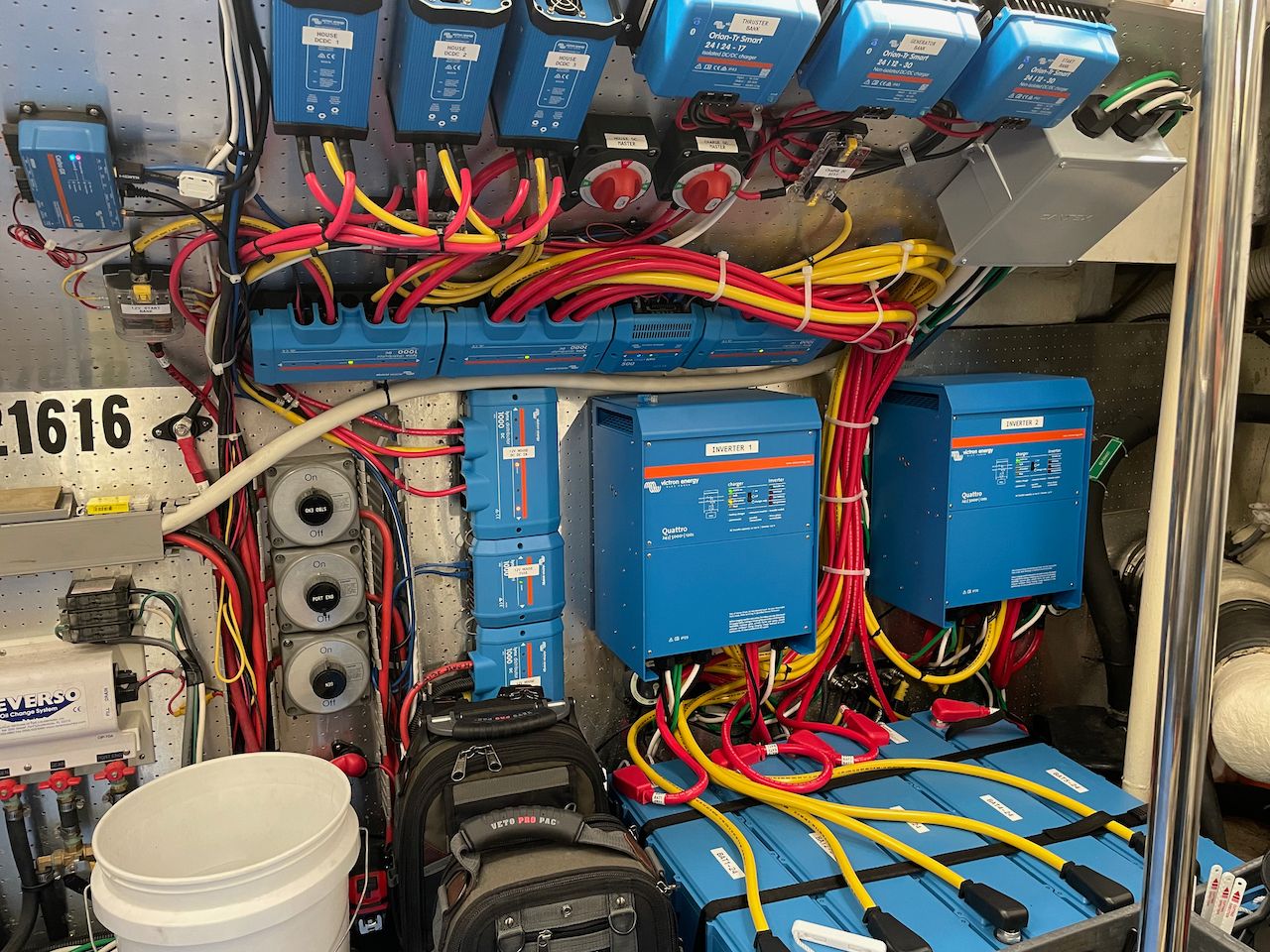
This is an update to that article to discuss what has worked, some performance details, and some future plans.
Performance
I have been extremely pleased with the overall performance of the system at every level. The inverters have worked flawlessly, batteries have been balanced the whole time, and I have plenty of capacity to run all of the things without really worrying about how much I'm using.
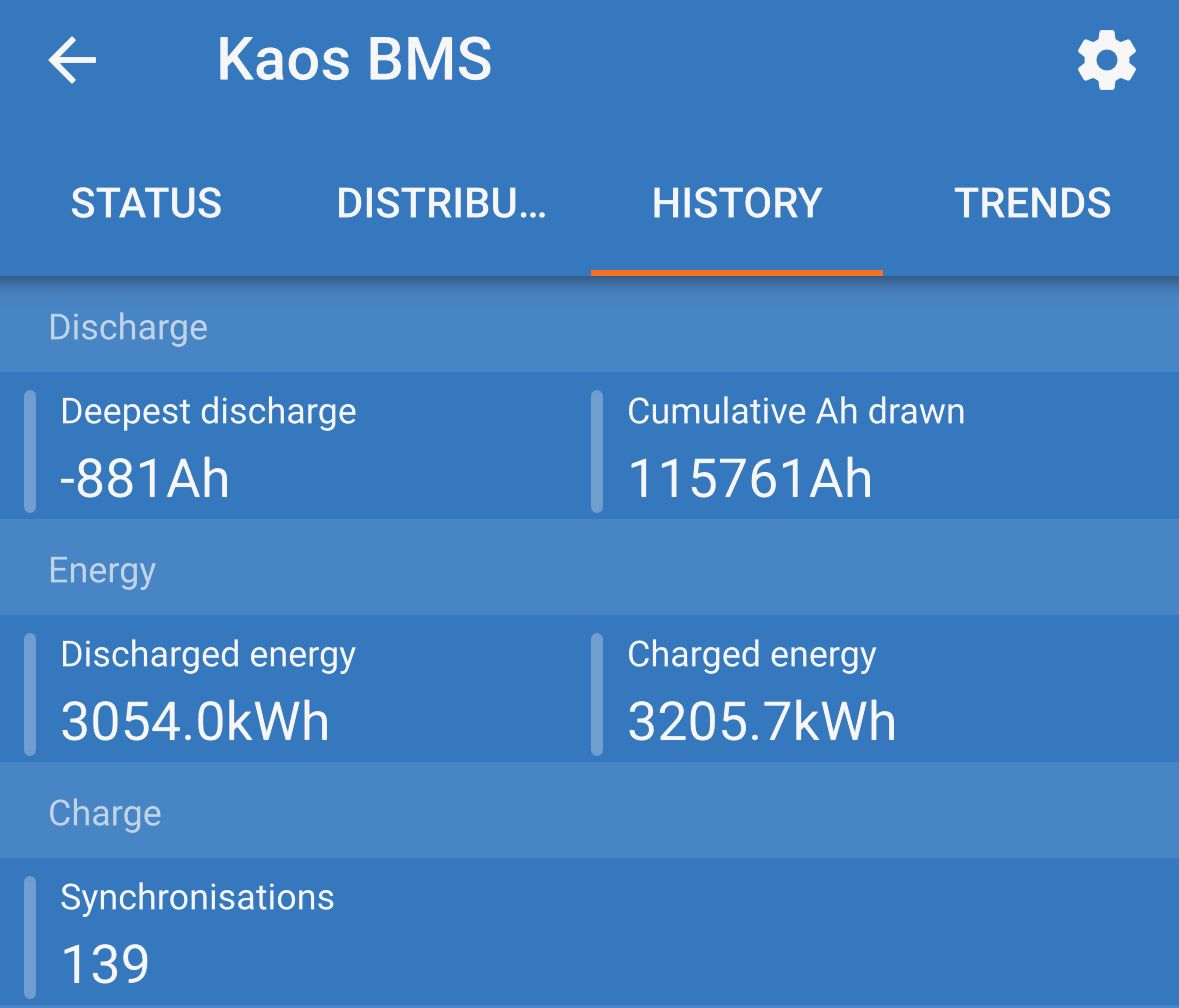
According to the BMS, I've discharged a max of 881 amp hours out of my 1000 amp hour capacity. That's not technically true, as I did a discharge down to 1% state of charge in the initial commissioning but reset the BMS stats after that (not intentionally).
The cumulative amp hours drawn is pretty nice. 115,761 total amp hours which works out to about 8269 amp hours a month, or about 272 amp hours per day. I'm away from my home slip and at anchor a lot - ~240 days away in 14 months, and about 150 days at anchor - so that usage seems about right.
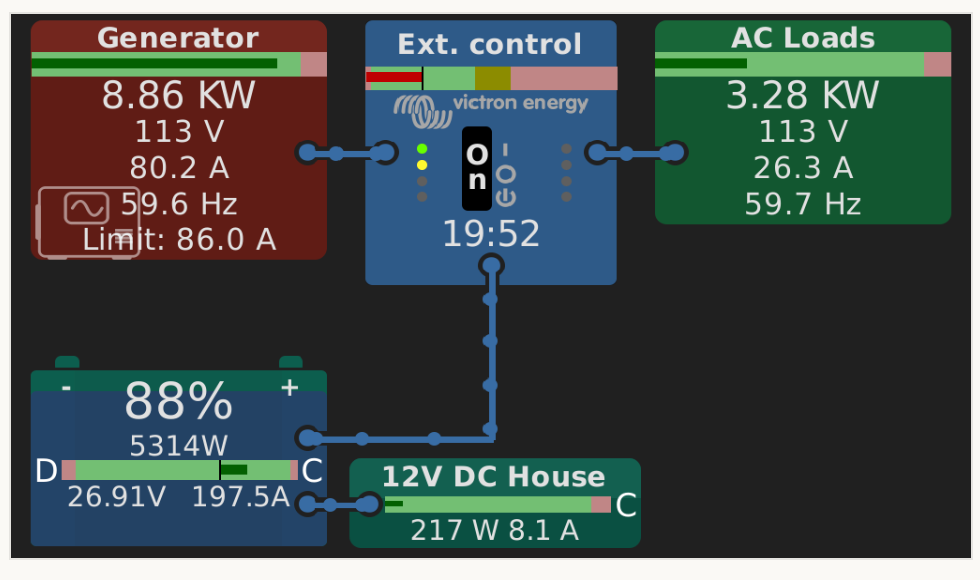
Charging has been really reliable as well. I have the system set to run the generator at 80% and it hums along without any issues. I do wish Victron had a slow start when the generator comes online - going from nothing to 80% in a few seconds sure doesn't make me happy, and I suspect the generator would agree. I had to do some experimentation to get the generator to a stable spot around 80% all of the time, and 86 amps (out of 100) seems to be that setting.
While underway, the single 24 volt alternator (something I am looking at adding to - see below) carries most of my running loads and charges anywhere from 20-50 amps. Not a ton, but this was part of the design at the time.
Monitoring
Monitoring has continually improved as Victron has rolled out more features to all aspects of their products. This includes more data in their online portal, VRM, as well as updates to the products and apps.
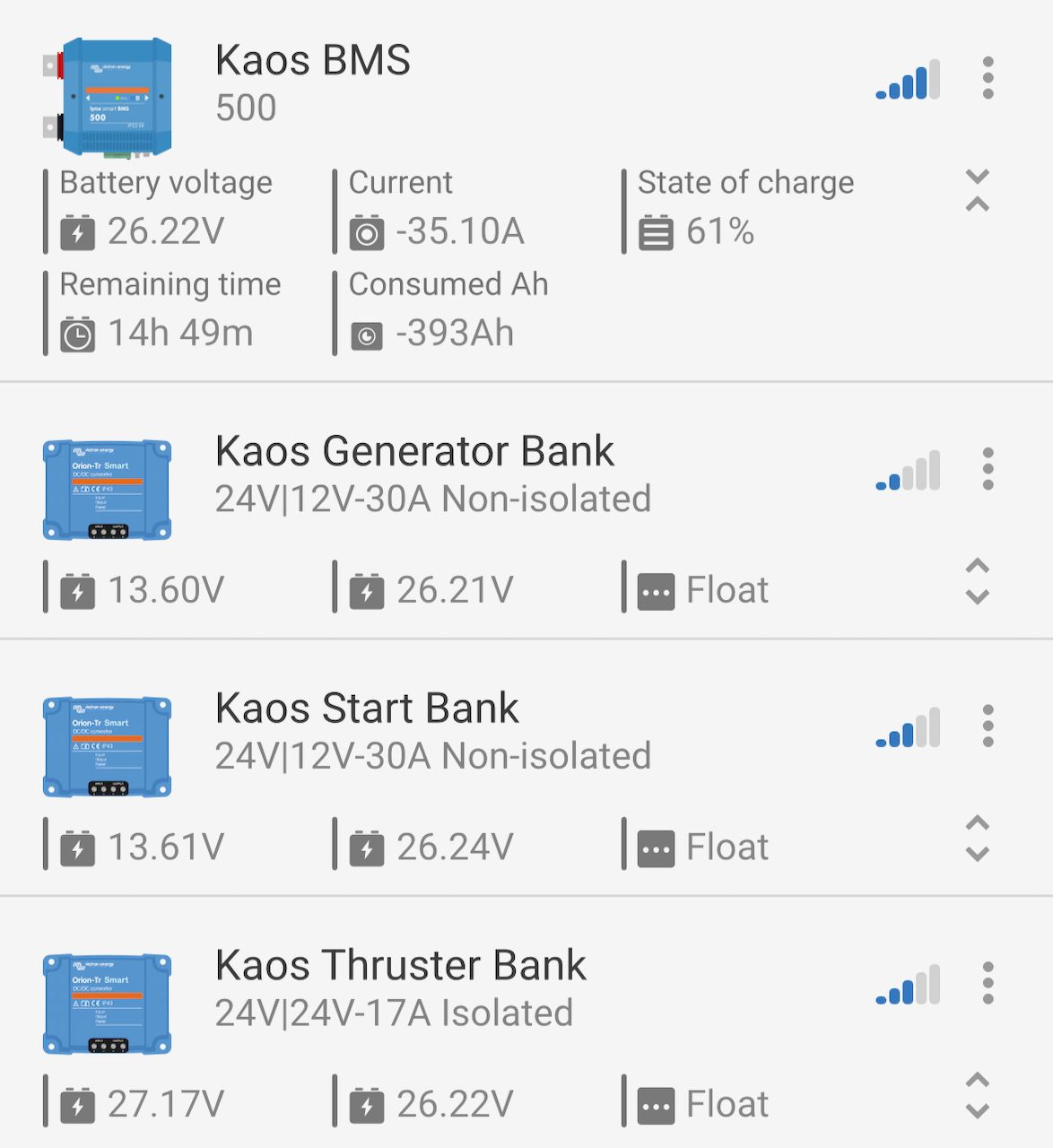
One update that was super nice was the quick status details in the Victron Connect app. This rolled out a few months ago and now shows bits of data on the main screen that allows you to do a quick check of everything without clicking in to each device.
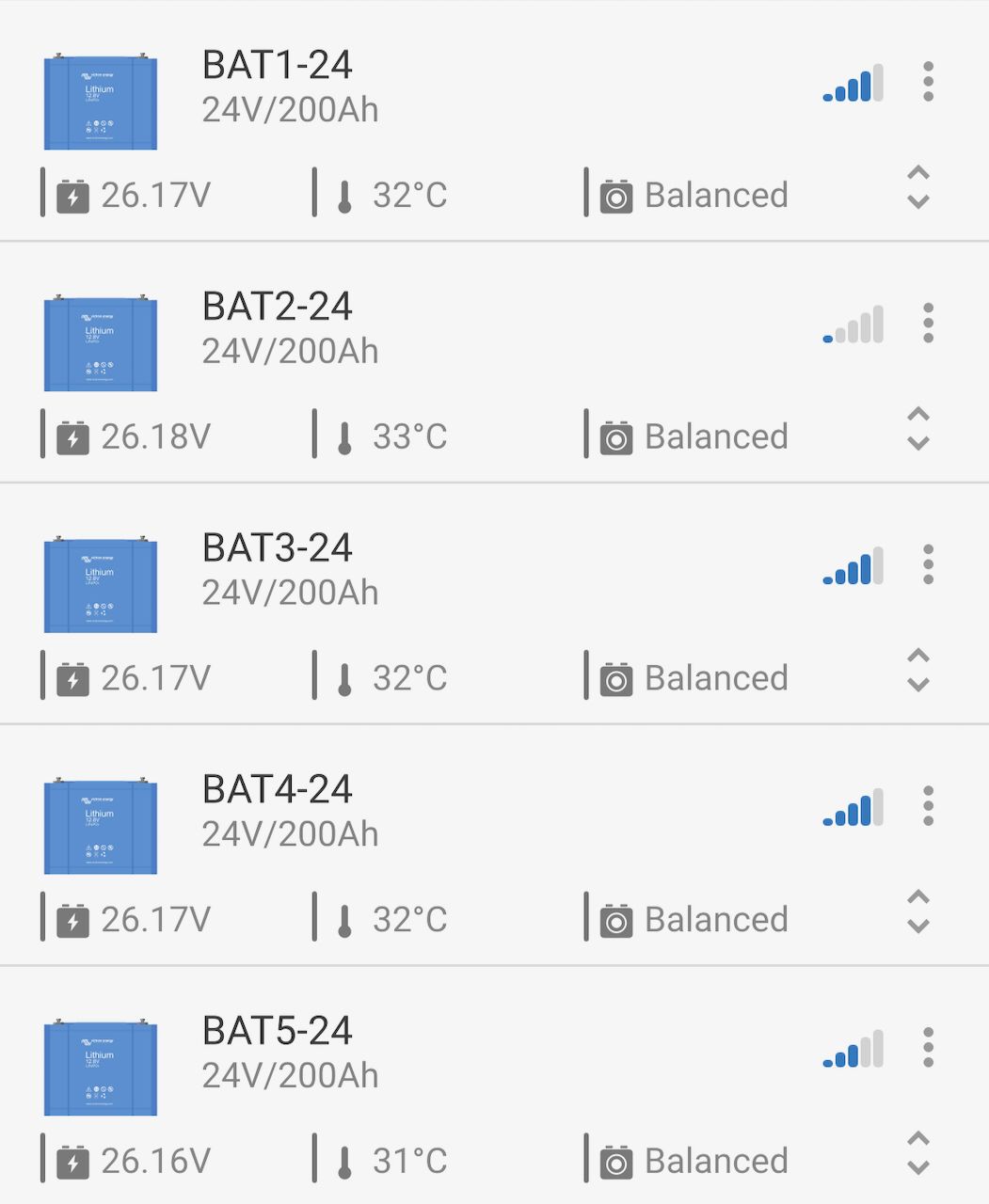
The last set of gear to get the update, at least on my boat, was the batteries. Now you can see their voltages, temperatures, and balance states all from the main screen. Really nice to see these on the main page of the Victron Connect app.
BUT .... it would be even better if this data was visible in the GX, VRM and elsewhere. Having to be within Bluetooth range of the devices to get this info is annoying, and impossible if you are remote.
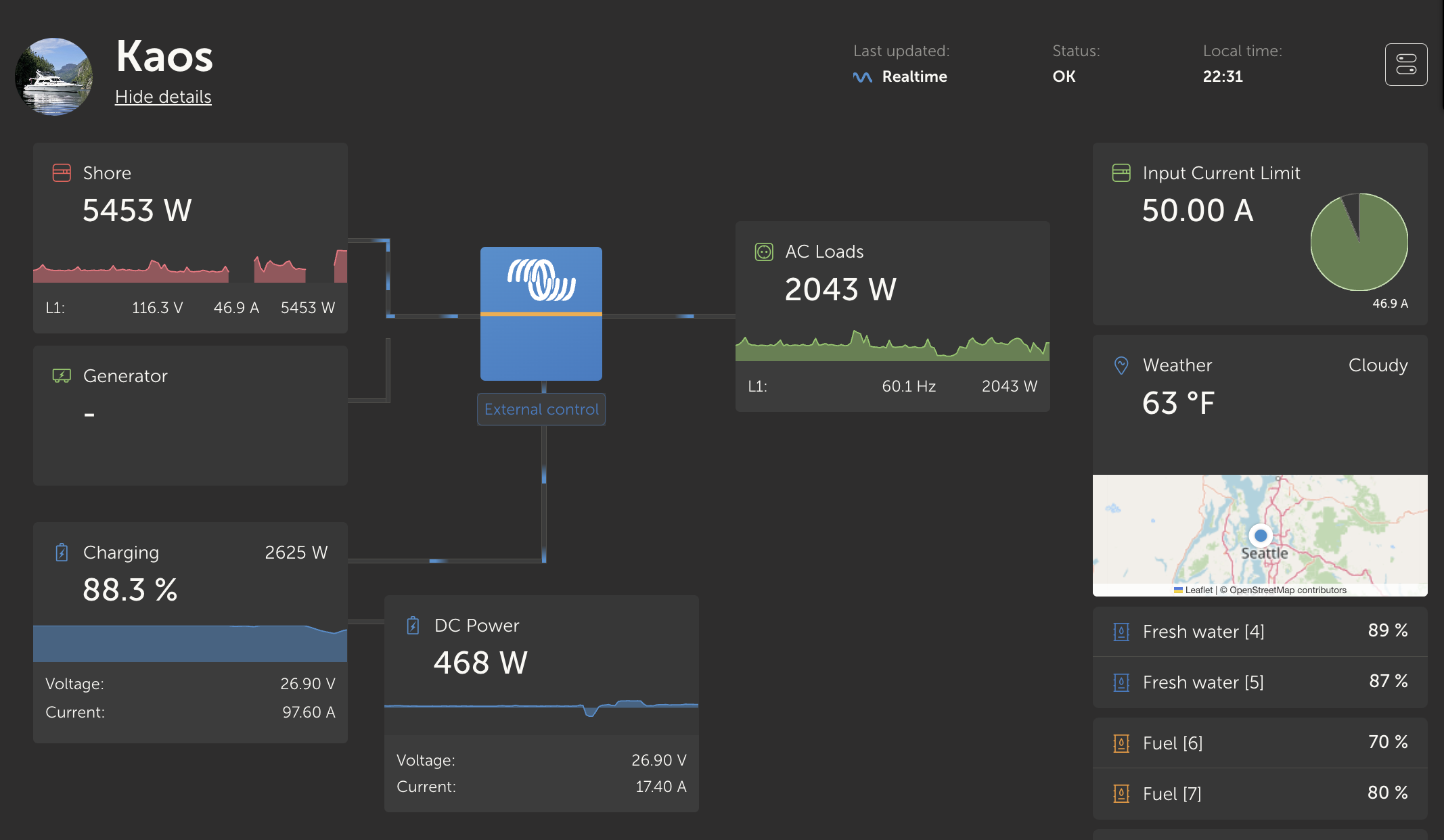
VRM continues to get better and better with more displays and widgets to match the specific system and setup. The real-time data is always nice to see, and being able to access it remotely via the app is also great.
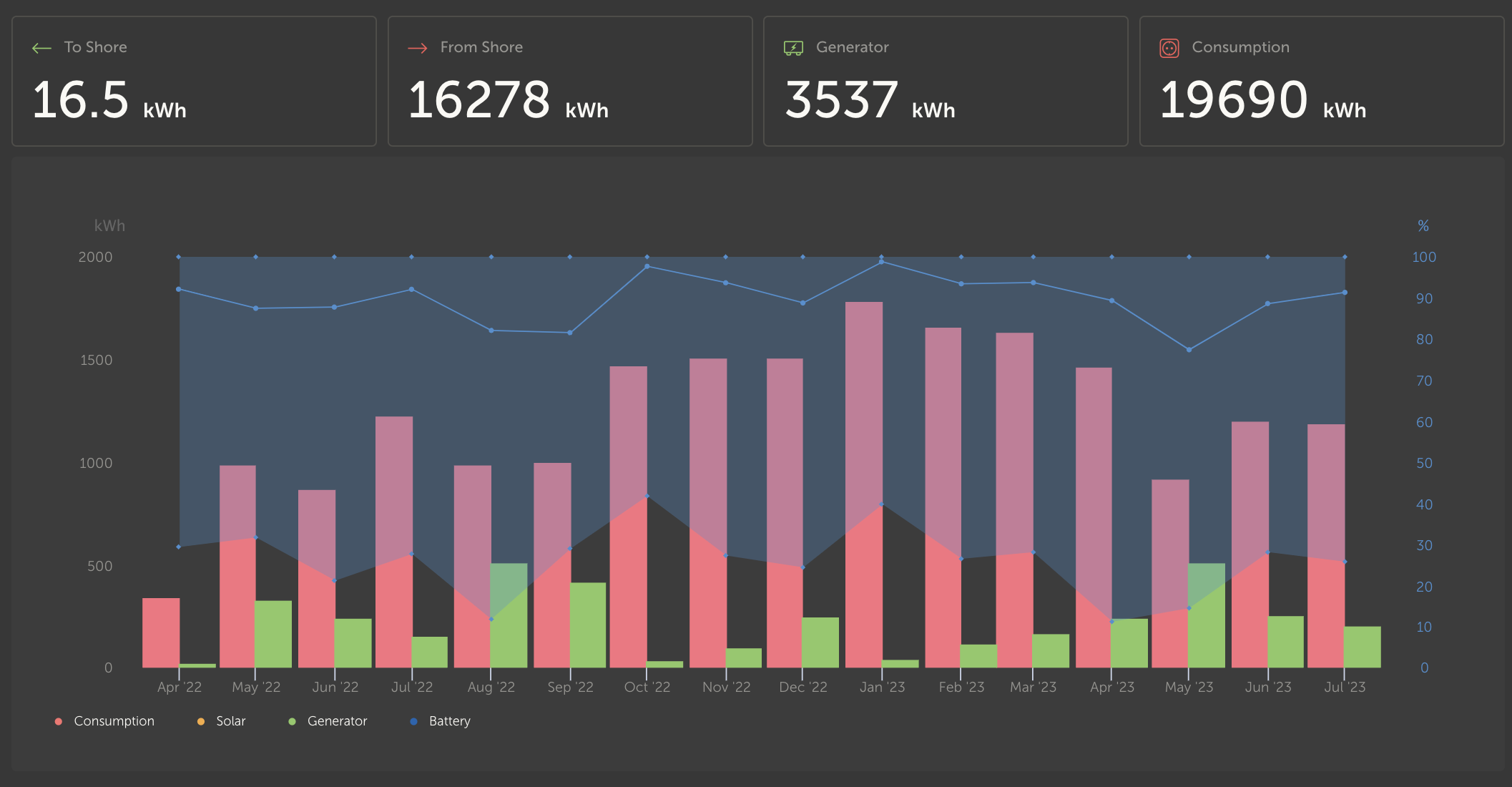
The overview is great to see all of the power stats, but they also added specific graphs for shore and generator power (or tweaked the shore power one) to provide a bit deeper dive.
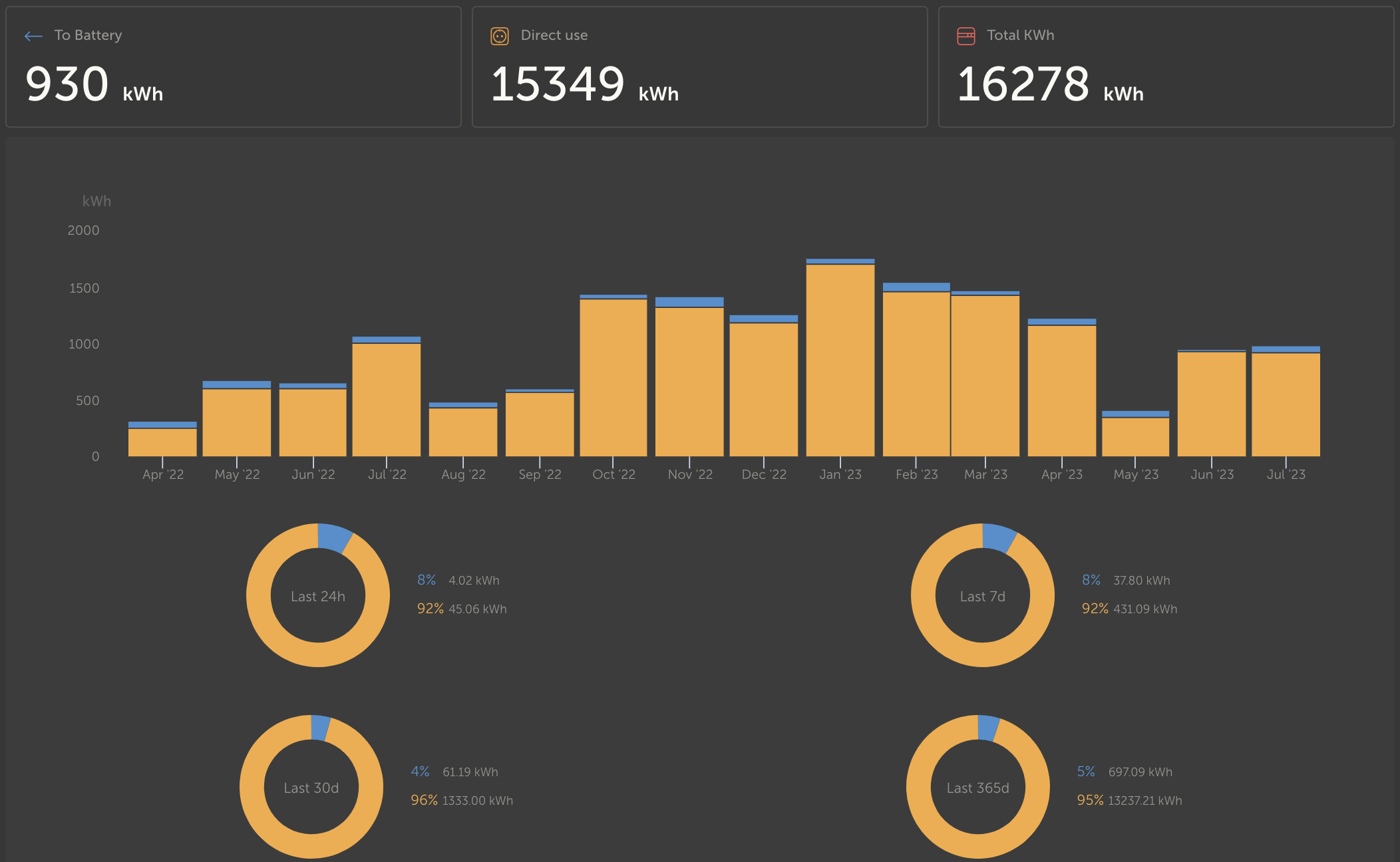
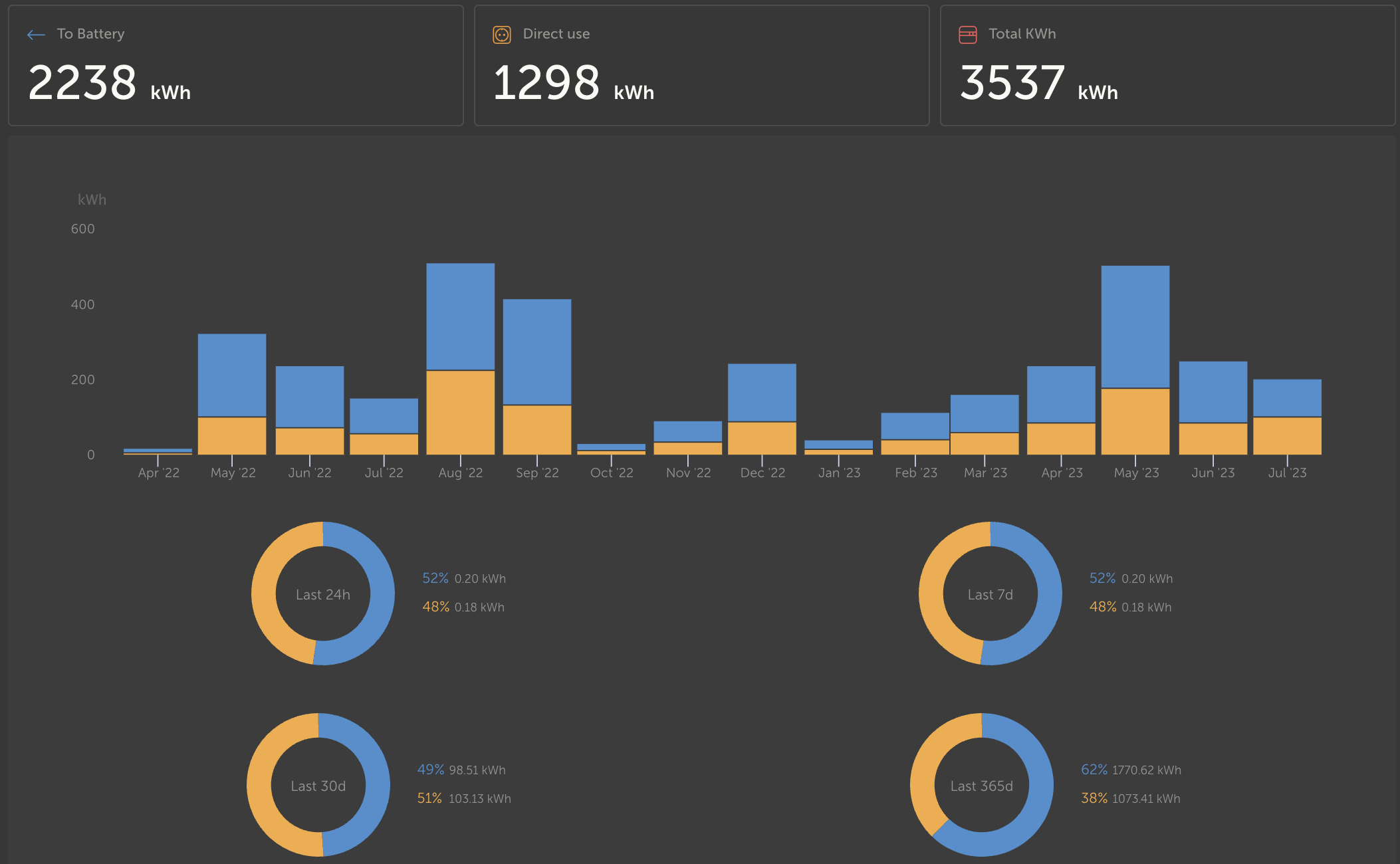
And you can also look at general consumption as well.
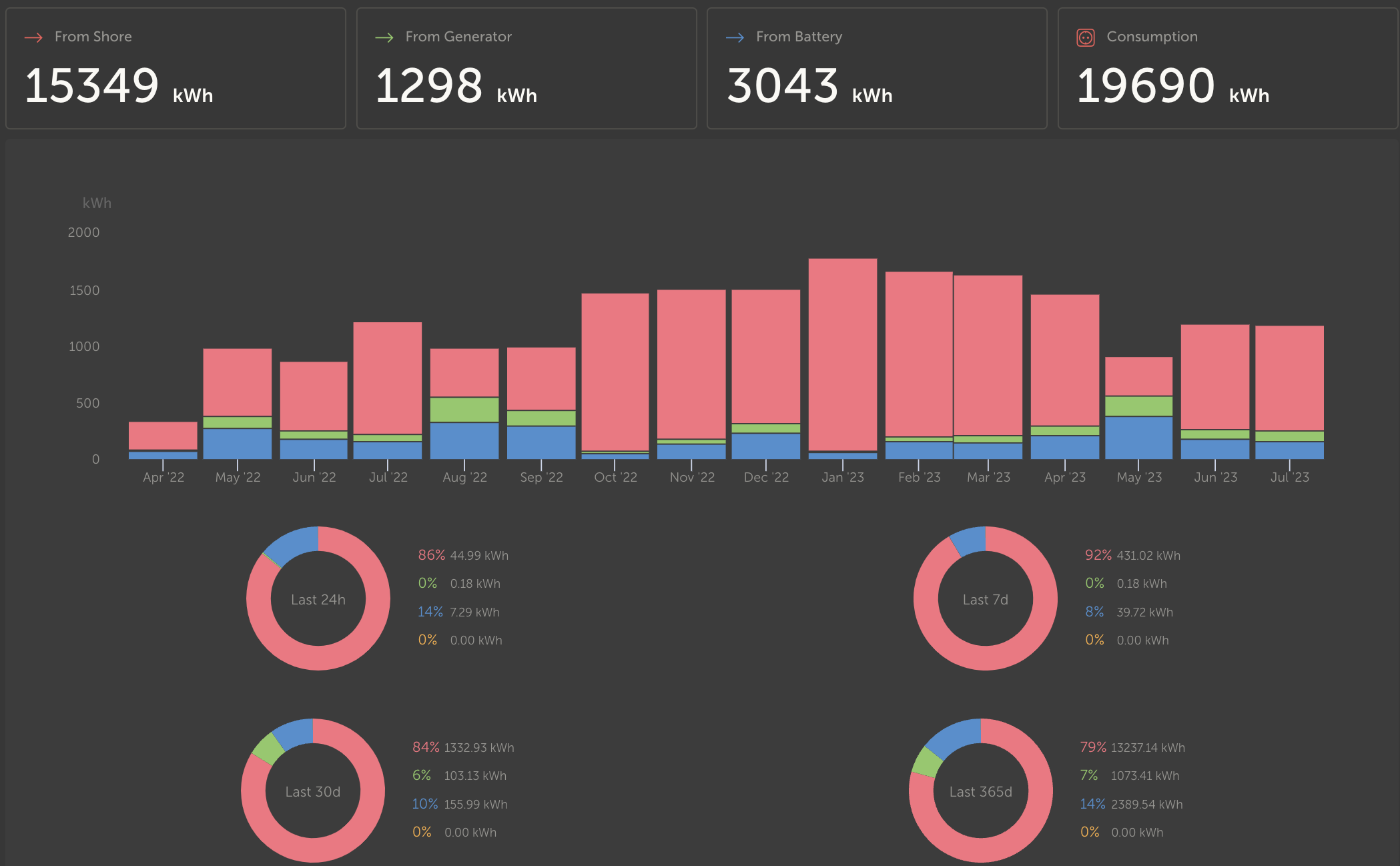
All of these make it easier to figure out the performance of your system, how much power you're using from different sources, etc. While I still log much of this data using SignalK and InfluxDB locally, it's hard to keep up with these specialized views which continue to improve.
Single Phase vs Split Phases
If you remember my original design, I had to choose a single phase design because of the way my Kohler generator was setup. It is a 120 volt, 100 amp generator, and although similar models can output 240 volts AC, after many tries to convert it (including Kohler experts) we were unable to get it to work reliably.
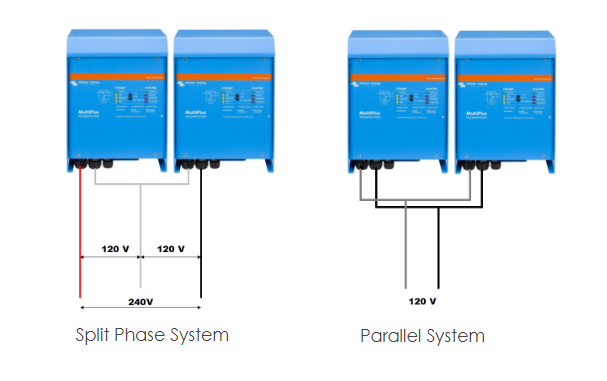
To quote my other article on the power system installation:
"There is one downside, and that has to do with utilizing the maximum amount of shore power. Originally with 50 amp 240v coming into the boat, I had the ability to split the various AC loads across two phases - essentially two banks of 120 volts each at 50 amps. With this new configuration, I will only be using one phase of the two, which means I can only get 50 amps total out of shore power."
Many people asked about that choice, and some were worried that I would regret the decision because I wouldn't have as much power. Having used similar systems on smaller boats, and installed them for others, I was pretty confident I would be OK.
So far, I have been very pleased with that choice for one main reason: simplicity.
It has allowed me to put everything on one phase and all on inverter. Everything. This includes the watermaker, washer/dryer, hot water tanks, air conditioning, engine block heaters, plus all of the usual stuff. I don't usually run all of those things off of inverter, but I could. It also means I don't have to balance phases and deal with those issues which can be annoying depending on what device is running when.
What it does do is make using the boat super simple for everyone involved. No more "hey, I need to turn the generator on to run the widget" or being worried about sleeping in through breakfast while folks try to figure out what they can/can't use. Everything just works.
We have used the air conditioning at anchor on super hot days when there was no wind. Or run a load of laundry when a puppy barfed or peed on something and not had to think about it.
I have very few issues having enough power while plugged in to shore power. The Power Assist feature from Victron deals with the situation where we exceed the 50 amp shore power connection. We never trip the breaker, and the system uses power from the batteries if needed to supplement.
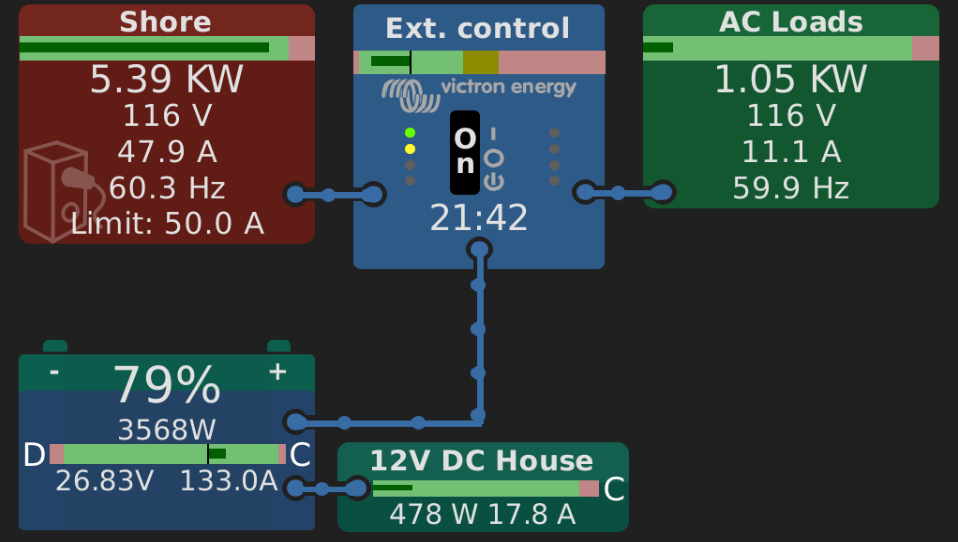
There was one situation where I came into a dock with really poor 30 amp power and needed to dial back the overall amperage to about 25 amps. This was the one time things didn't work well because the amount of AC power I needed for normal stuff was close to 25 amps, which meant the batteries never got charged, and in fact were depleting to supplement when we went over. Having a split phase system may have allowed me to plug into 2x 30 amp shore power connections and still charge batteries while running some other things provided my split phases were setup that way, which they often aren't. So, in that case, I might have been better off, but it is rare for that to be an issue, and I could have always kicked on the generator for a while.
How is the 24 volt / 12 volt setup working?
If you didn't read the previous article, Kaos had 12 volt DC power throughout, except for the bow thruster. Having designed many 12 volt systems in the past, I wanted to avoid having a 12 volt bank for the inverter due to the issues with cable size and amperage for larger power demands.
I really wanted to have a 48 volt battery bank, but none of the big manufacturers really supported that well, alternators were a fortune, and fuses and other things were still a mess.
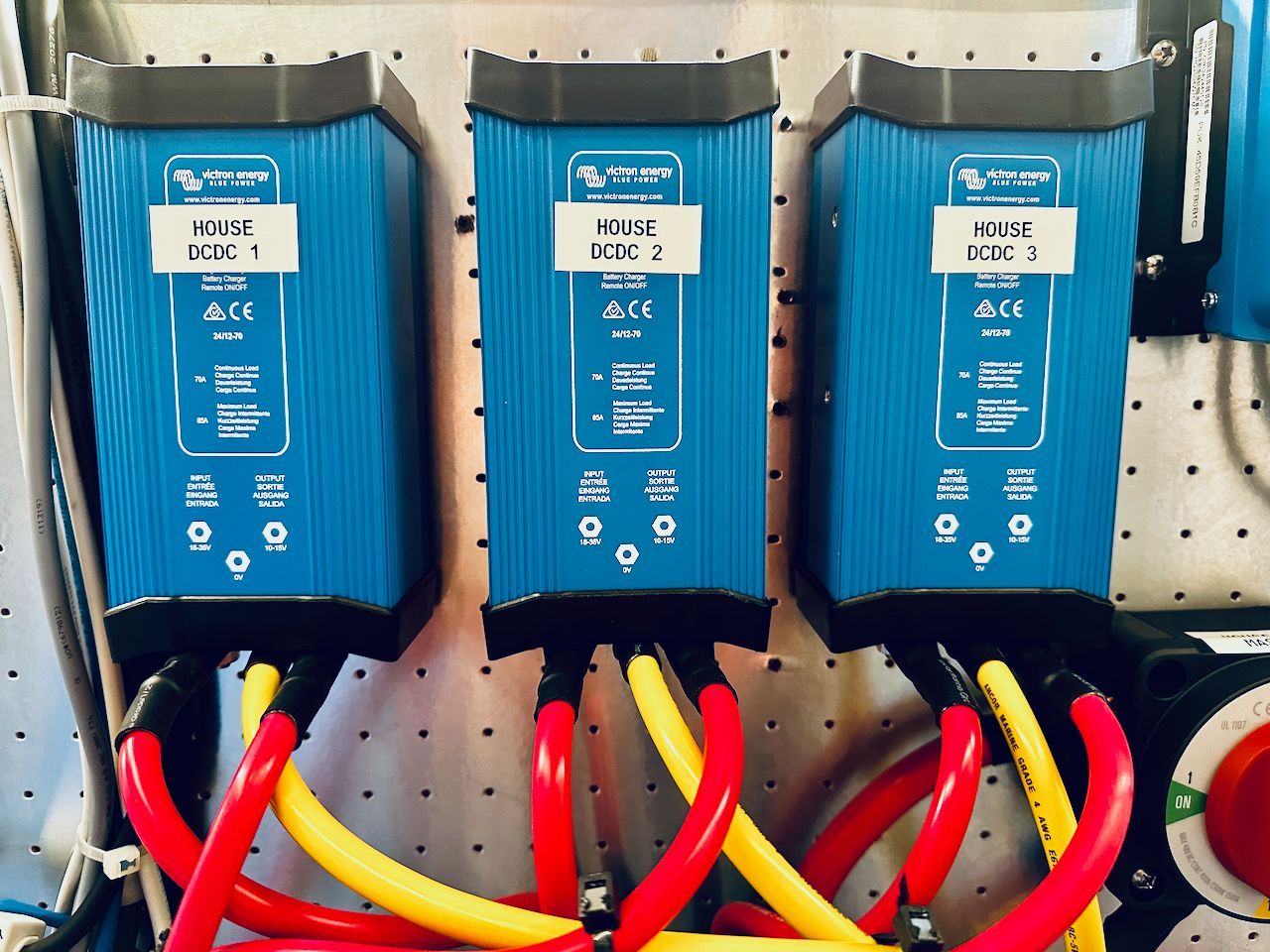
So I chose 24 volts for the "inverter bank" and used 3x 70 amp 24 to 12 volt DC-DC converters connected to it to provide 12 volt power to the existing system. The converters have worked flawlessly, barely ever getting warm, even when heavy DC loads are being used. They provide a nice, clean 13 volt DC output to the main DC panel, big Webasto diesel heater, windlass, davit crane, and more.
There have been a few times where high amperage devices have caused an issue with my NMEA 2000 bus. The biggest culprit was the windlass motor that failed in December 2022 (spectacularly, that is the subject of another article) and tripped the circuit breaker. A replacement motor also had issues (thanks Maxwell) and caused issues again.
As a result, I put in a stabilizing power supply on my NMEA 2000 bus. I've done this in the past both on my own boats and client boats to provide rock solid voltage to prevent any issues.
Any issues or changes?
Not very much, to be honest. Most things were tweaks with settings in the first couple of weeks, and firmware upgrades to all of the components as they have become available. All of the wiring and major components are the same as outlined in the article, which is somewhat unusual. I tend to install bleeding edge things, and futz with them to get a bit more out of them, but this system has been surprisingly stable and kept me happy.
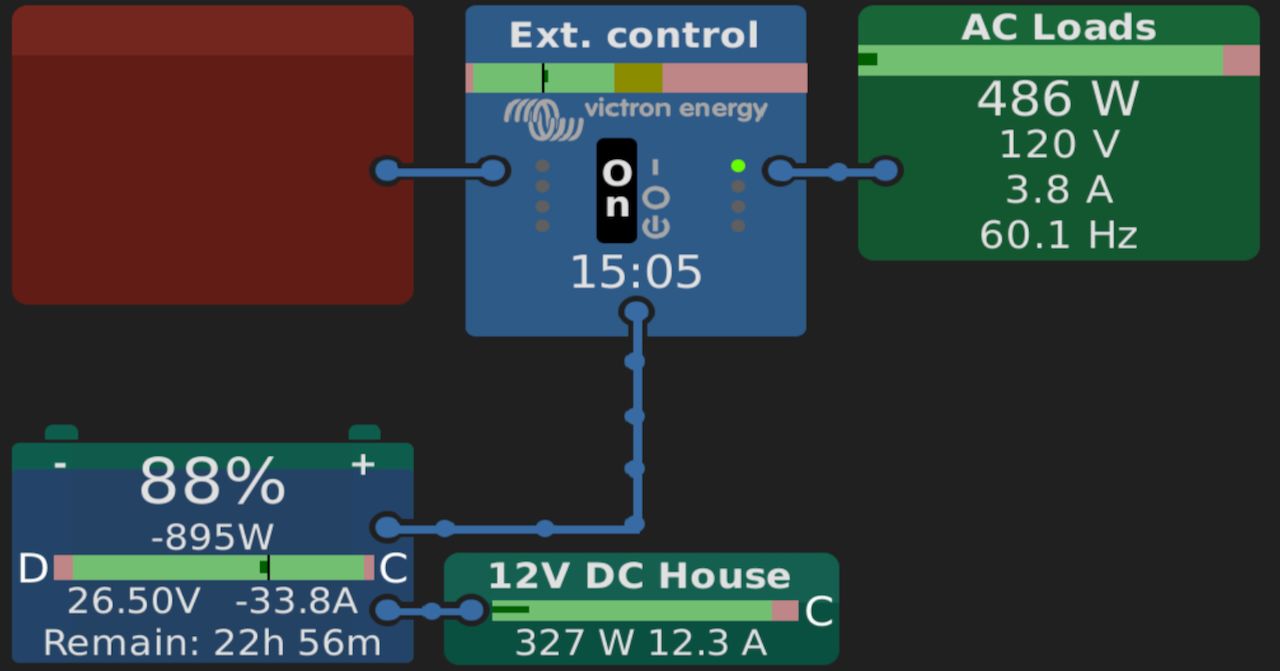
I did install the GuiMods add-on to the Cerbo GX to allow for more customization and data display, and spent a while customizing it to my liking. I wrote a bit about that too below. I highly recommend it if you are someone who likes more data and visualization in one screen.
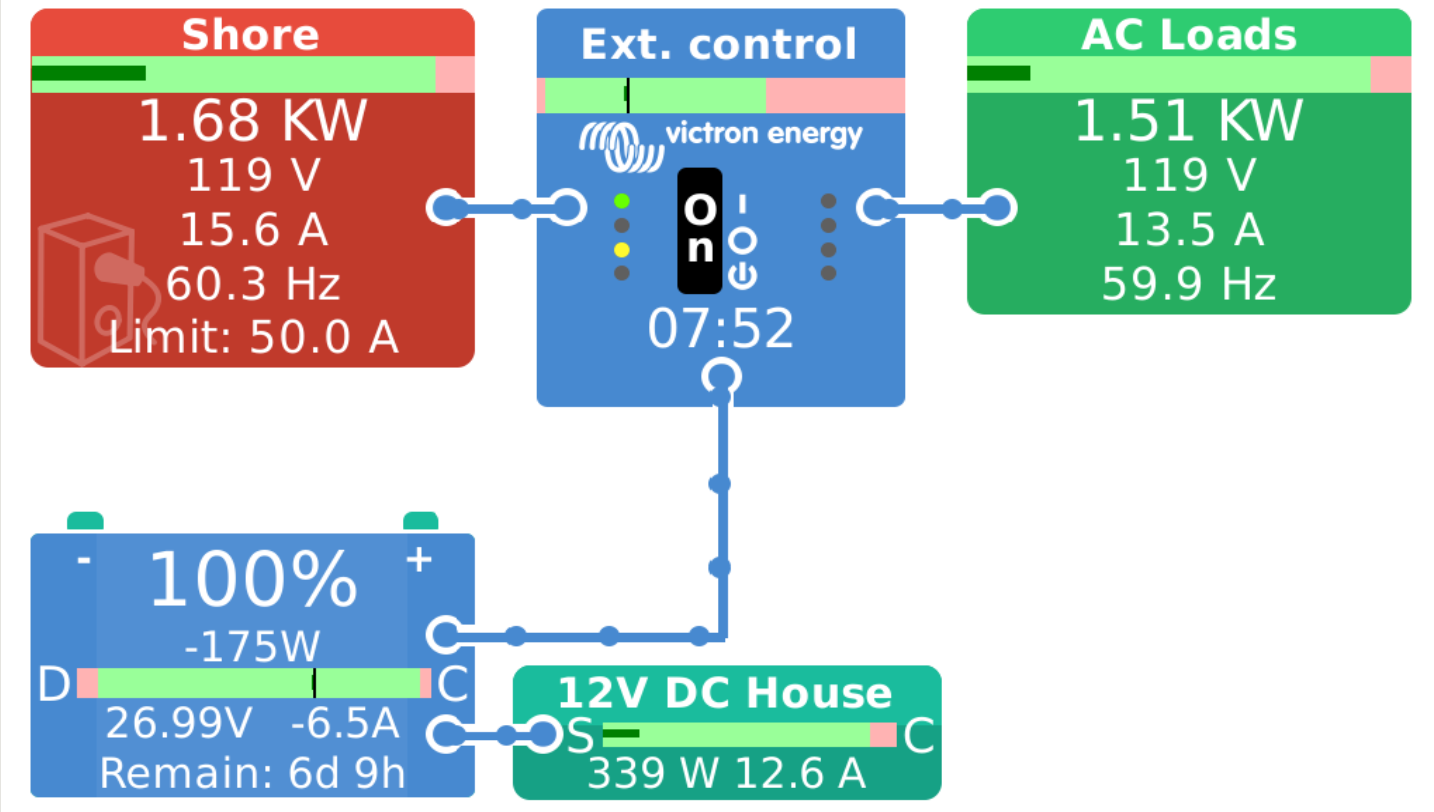
BMS shut down
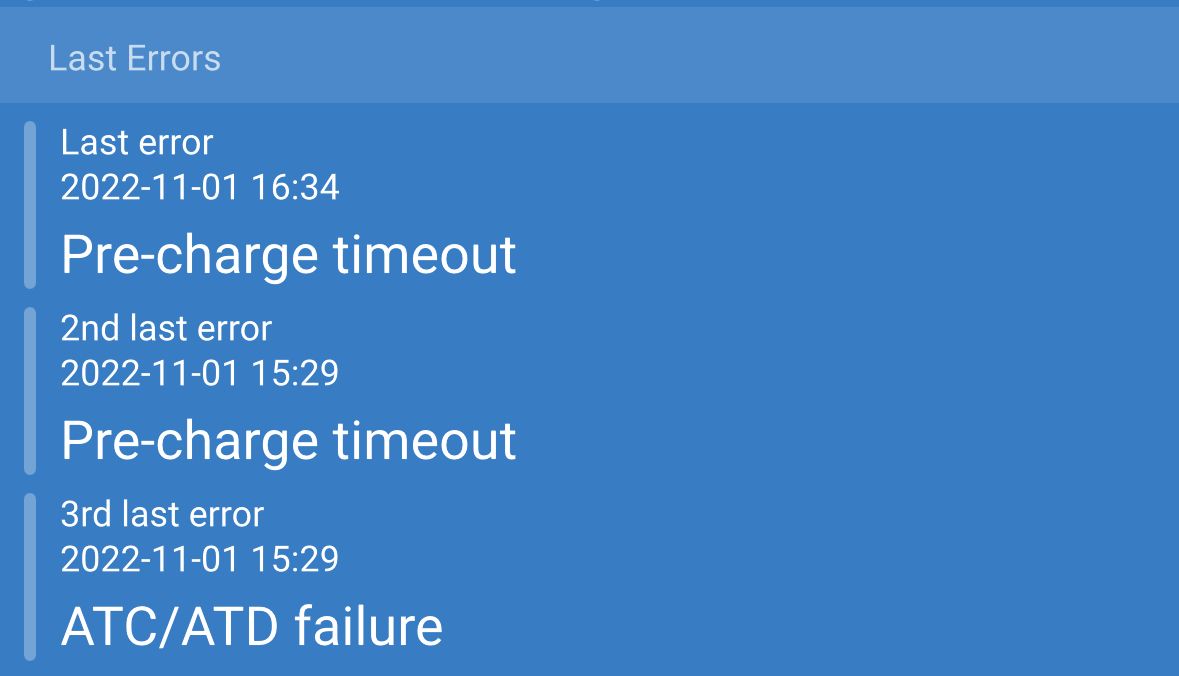
I had one issue with the Lynx BMS where I got it into a state that caused it to trip and shut off, killing both the inverters and the 12 volt DC house - so everything. I was testing something, and either disconnected the BMS cable from the batteries (oops) or something else - I actually don't remember what I was testing. It ended getting into a situation where I had to pull the manual to figure out how to get it happy again. Also, I did this while in the boatyard during a windstorm with really cold temps and relying on the electrical system to provide heating to prevent things from getting too cold.
Balmar regulator replaces Wakespeed
I have been a fan of the Wakespeed regulator for some time now, and initially had one on Kaos. I've also written about them below. In terms of a programmable regulator for high output alternators, there is no other choice on the market right now that has the features that the Wakespeed provides.
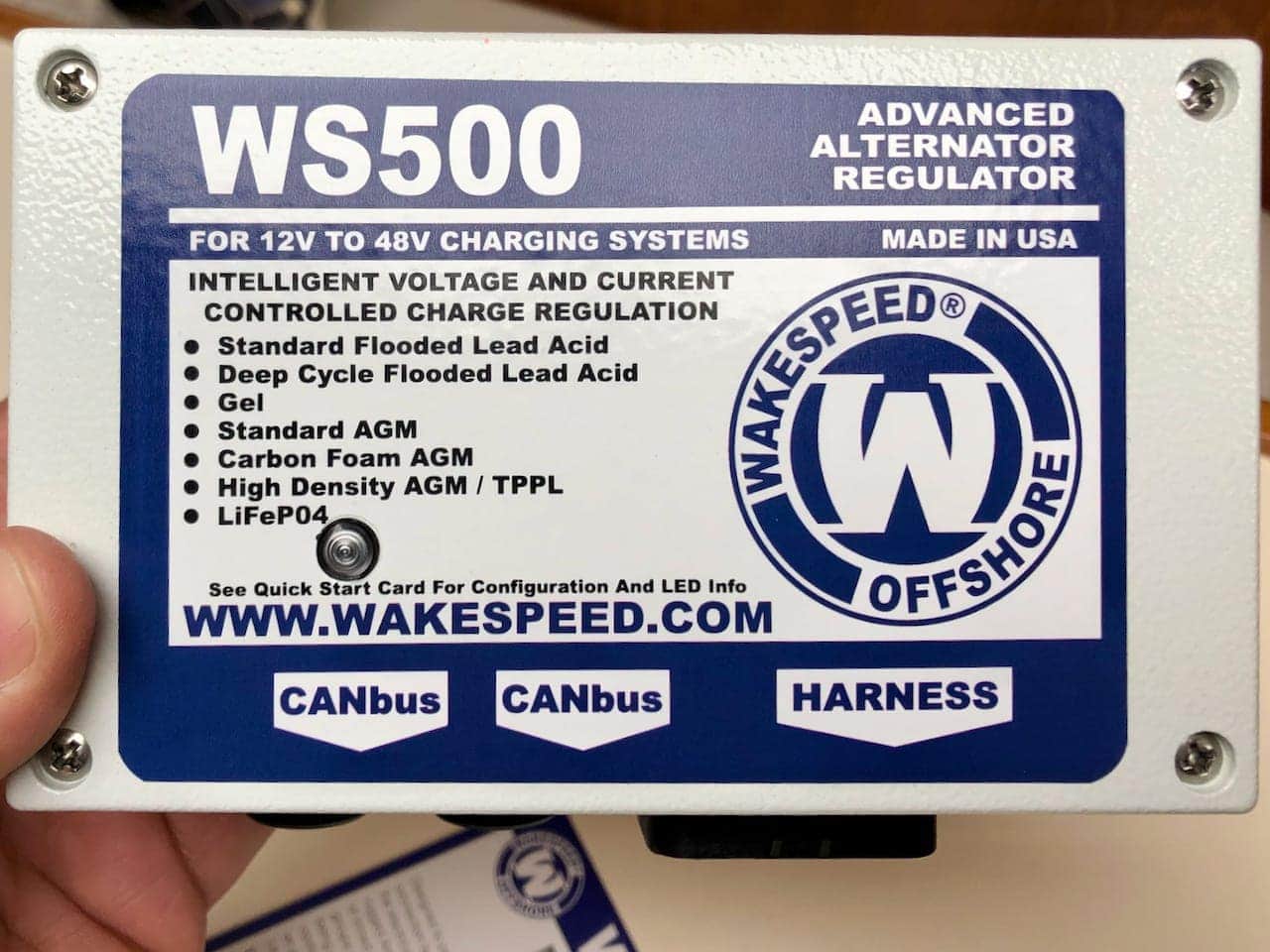
I switched to a Balmar 624 regulator in June of 2022 after having issues with the Wakespeed working reliably with the Lynx BMS. Having my share of integrating the Wakespeed on my previous boat Rendezvous, I chose to err on the side of simplicity and went with the Balmar after programming it for LiFePO4.
It sounds like many of the teething issues between the Wakespeed and Lynx BMS have been resolved, in talking with folks who have installs and are performing installations, so I may look at adding this back soon.
What could be better?
DC-DC Charger Monitoring
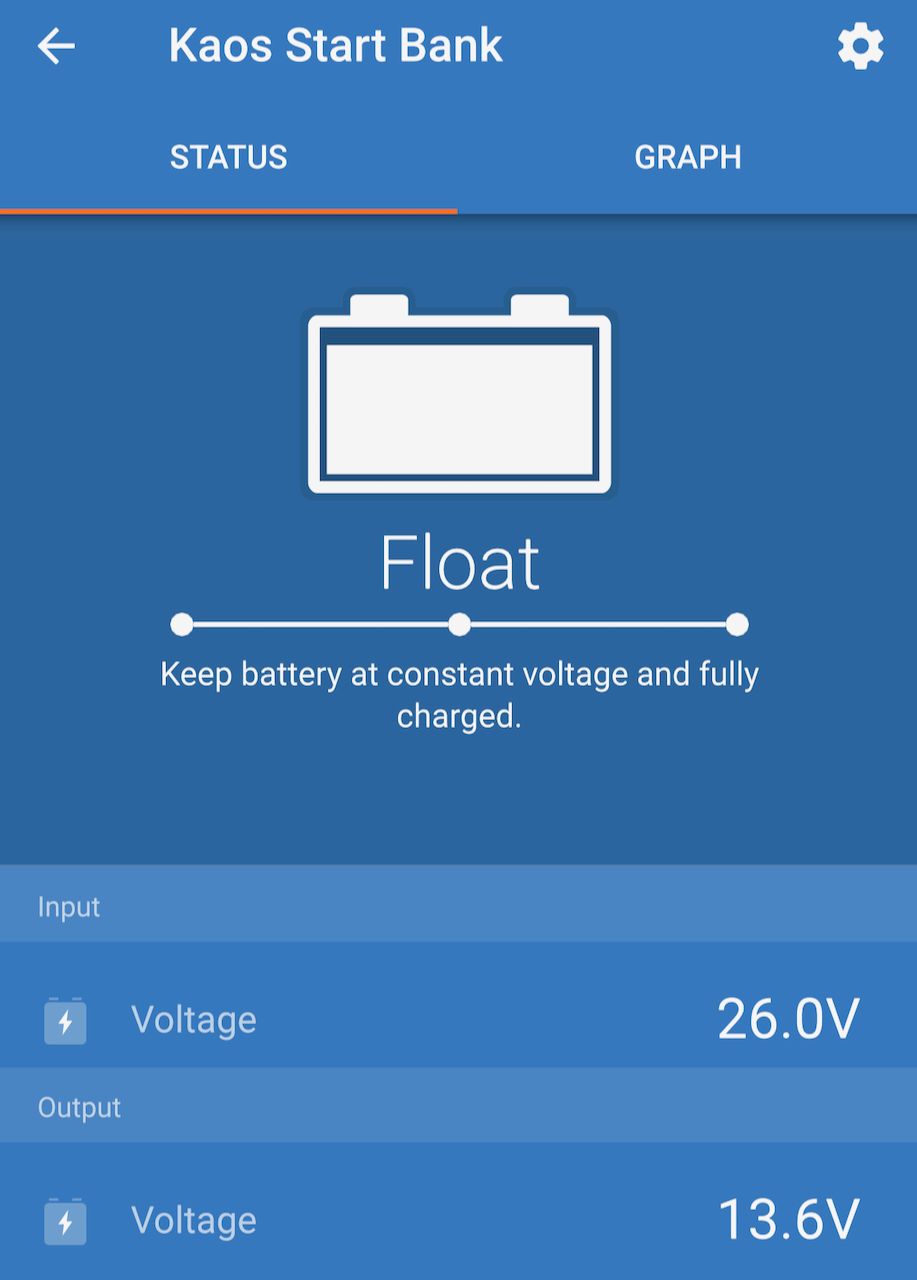
I would like to be able to monitor the DC-DC chargers better than using a smart phone and Bluetooth. I've toyed with adding some spare shunts I have just to bring the voltage into the Victron ecosystem, but I've not gotten around to it. It would really be nice if Victron added some method to grab even basic info from these chargers and put it on their network so you could see it in the Cerbo or online in VRM and drive alerts from it.
Second 24 volt Alternator
I'd like to add a second 24 volt alternator on the port engine and remove the existing 12 volt one that is connected to the start bank, and does very little. This would give me quite a bit more charging while underway and allow for more of a backup charging method to the generator.
However, after having lived on 3 boats setup with high output alternators, I know the cost associated with having those sorts of systems. Yes, it is great to use your engines to charge while underway, but the higher output alternators require a lot more cooling, eat more belts if not perfectly tensioned, and in the case of dual alternators pointed at the same bank, require expensive regulators and perfect configuration. In all the times I had alternators setup this way, I always had to do something more to keep things happy, which I would prefer to avoid if possible.
More Batteries!
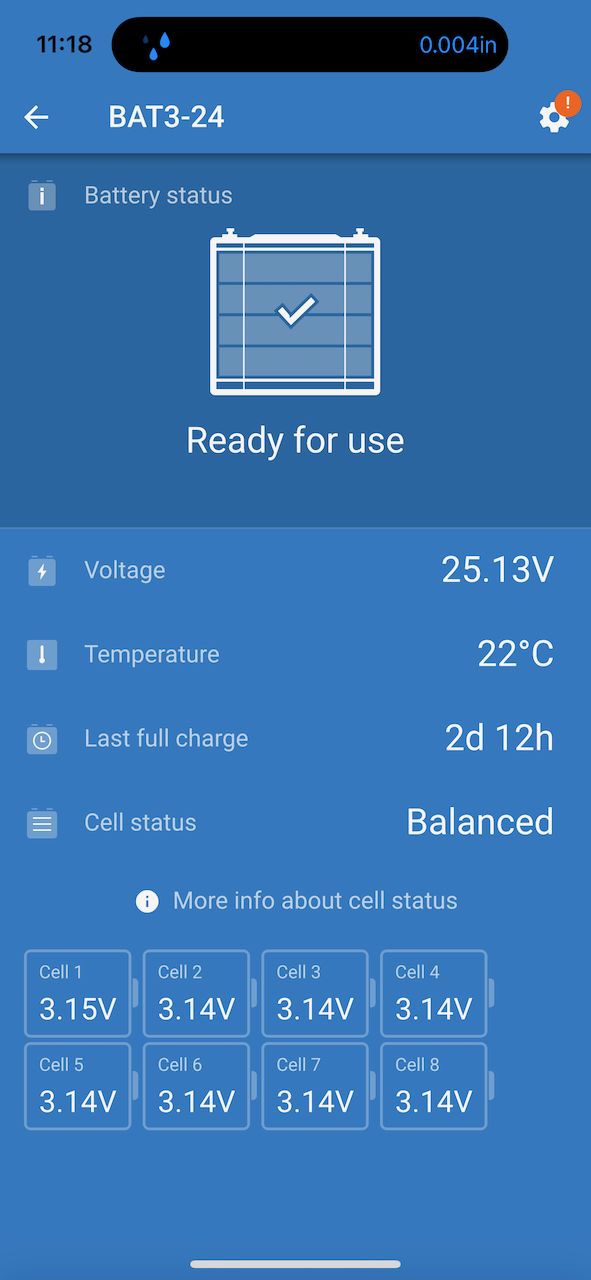
Who has ever said they have enough batteries? I haven't met them - yet! I would love to add a few more batteries to increase overall capacity and extend the time I can avoid charging. Of course, this comes at a cost of the batteries themselves, but also longer charging cycles on the generator.
I think 2 more 200 amp hour 24 volt batteries would be a nice additional bump in capacity while not lengthening things too much. That would take me to 1400 amp hours @ 24 volts, or 2800 amp hours at 12 volts. The biggest challenge will be wiring them into the system as I've already gotten to the max amount of Lynx distribution bars that you can have. I may be able to swap one from the output side if I am creative, but we'll cross that bridge if I somehow find the $ in the budget for the 2x extra batteries.
Maretron Instancing Issues
I really wish Maretron N2Kview would consume and display NMEA 2000 data correctly. Their interpretation of instancing is less than desirable, and results in the data that Victron sends out being unreliable. Boating friend Peter Hayden of MV Tanglewood covered identical issues with his setup:

You can "fix" this by making a change to Victron, which results in N2Kview showing this correctly, but also breaking Victron's management in the process, which isn't desirable either. While Maretron N2Kview isn't the most modern or easy to use application out there, it is one of, if not the only, reasonably priced boat data management and display systems available to recreational boaters.
As a result, I end up relying on the Victron apps and displays, which are nice, but it would be great to have all of this in one place, and be able to drive global alarms from there as well.
Conclusion
Overall I am extremely happy with the system performance and reliability the last 14 months. It was a great investment that has brought simplicity and comfort to the boat and allowed us to be more relaxed while at anchor. I expect it to continue to provide benefits many years into the future - at least until I find something new and interesting to replace it with 😂 ⚡️


